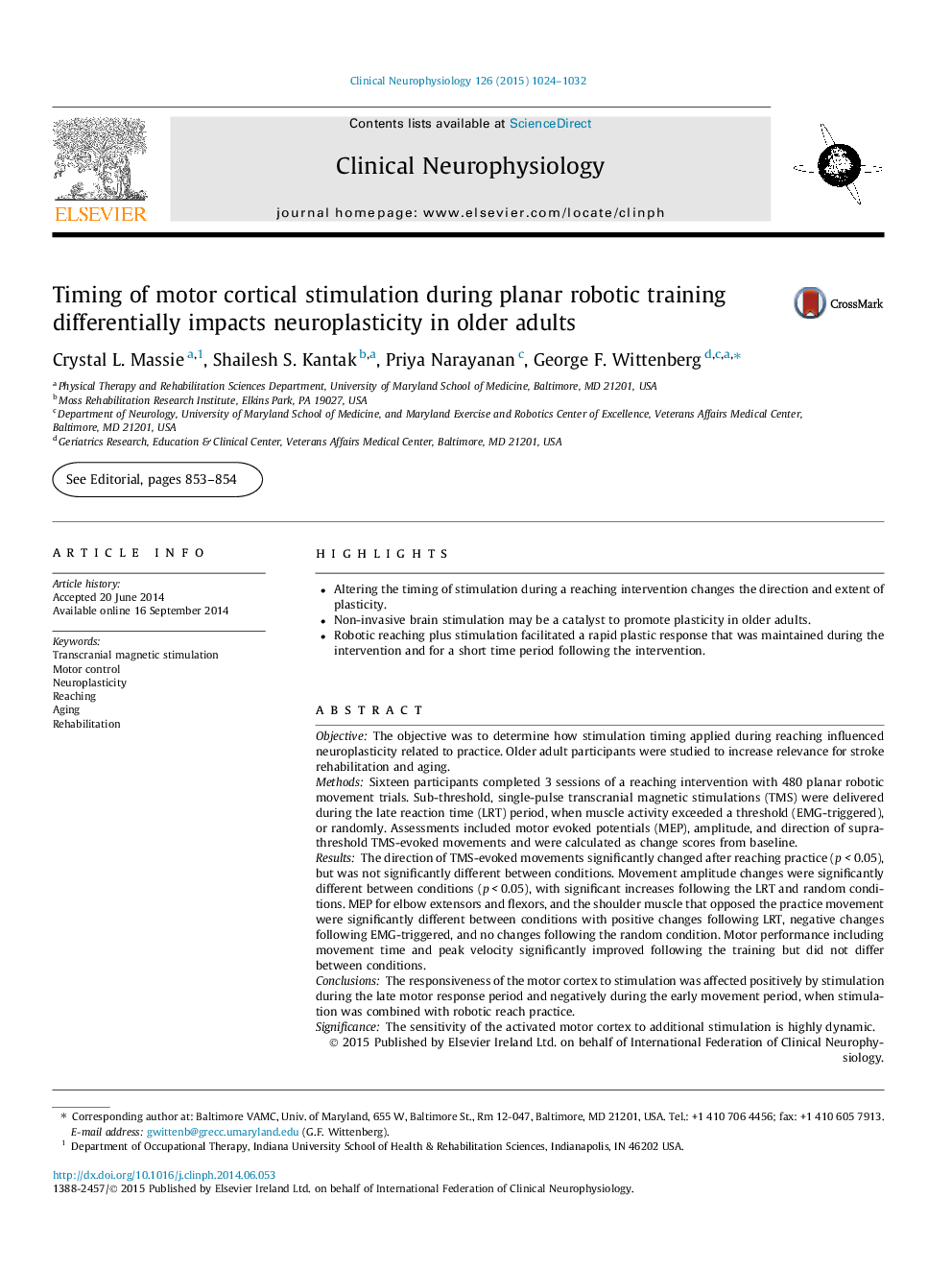| Article ID | Journal | Published Year | Pages | File Type |
|---|---|---|---|---|
| 3042797 | Clinical Neurophysiology | 2015 | 9 Pages |
•Altering the timing of stimulation during a reaching intervention changes the direction and extent of plasticity.•Non-invasive brain stimulation may be a catalyst to promote plasticity in older adults.•Robotic reaching plus stimulation facilitated a rapid plastic response that was maintained during the intervention and for a short time period following the intervention.
ObjectiveThe objective was to determine how stimulation timing applied during reaching influenced neuroplasticity related to practice. Older adult participants were studied to increase relevance for stroke rehabilitation and aging.MethodsSixteen participants completed 3 sessions of a reaching intervention with 480 planar robotic movement trials. Sub-threshold, single-pulse transcranial magnetic stimulations (TMS) were delivered during the late reaction time (LRT) period, when muscle activity exceeded a threshold (EMG-triggered), or randomly. Assessments included motor evoked potentials (MEP), amplitude, and direction of supra-threshold TMS-evoked movements and were calculated as change scores from baseline.ResultsThe direction of TMS-evoked movements significantly changed after reaching practice (p < 0.05), but was not significantly different between conditions. Movement amplitude changes were significantly different between conditions (p < 0.05), with significant increases following the LRT and random conditions. MEP for elbow extensors and flexors, and the shoulder muscle that opposed the practice movement were significantly different between conditions with positive changes following LRT, negative changes following EMG-triggered, and no changes following the random condition. Motor performance including movement time and peak velocity significantly improved following the training but did not differ between conditions.ConclusionsThe responsiveness of the motor cortex to stimulation was affected positively by stimulation during the late motor response period and negatively during the early movement period, when stimulation was combined with robotic reach practice.SignificanceThe sensitivity of the activated motor cortex to additional stimulation is highly dynamic.
